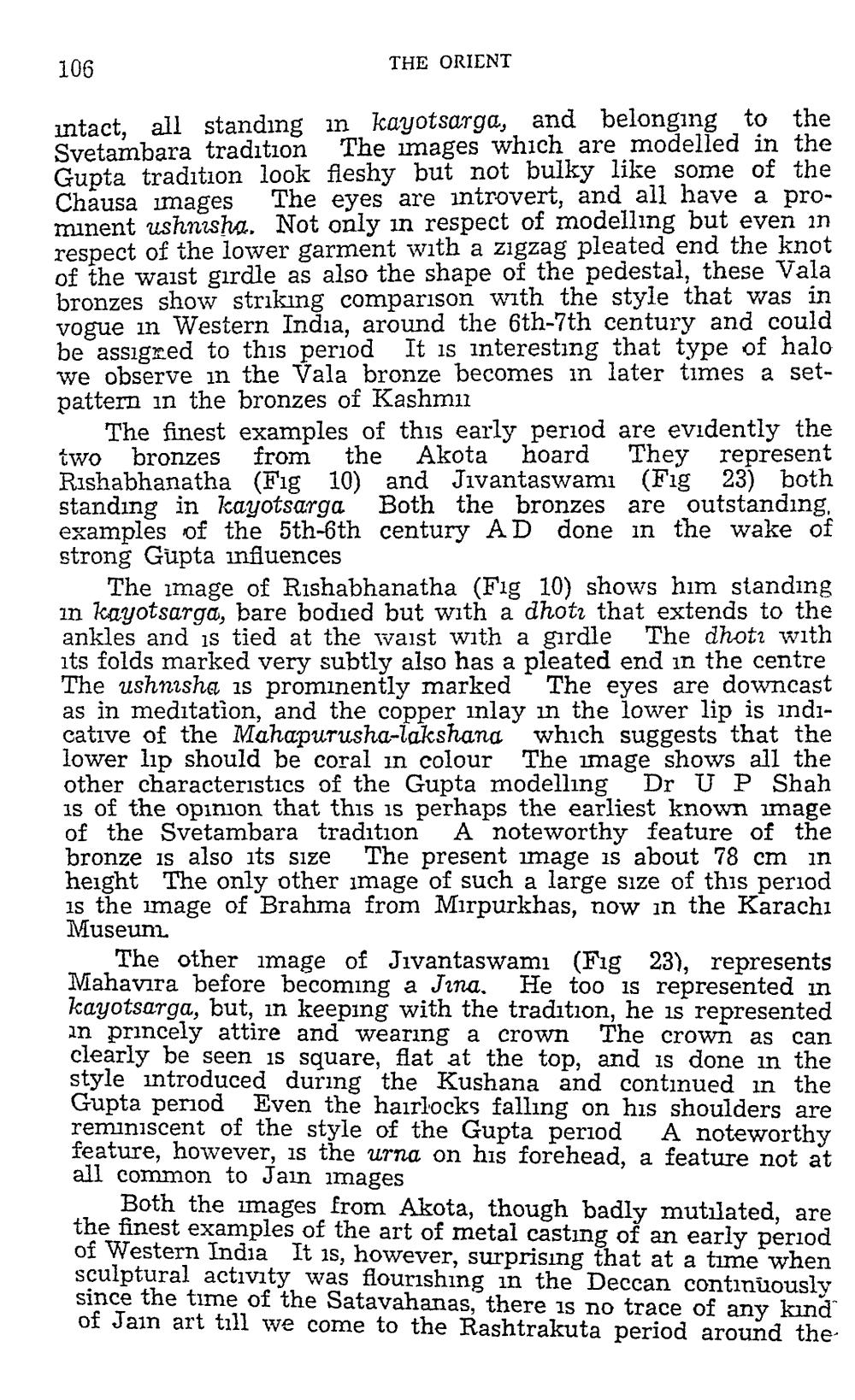________________
106
THE ORIENT
intact, all standing in kayotsarga, and belonging to the Svetambara tradition The images which are modelled in the Gupta tradition look fleshy but not bulky like some of the Chausa images The eyes are introvert, and all have a prominent ushnisha. Not only in respect of modelling but even in respect of the lower garment with a zigzag pleated end the knot of the waist girdle as also the shape of the pedestal, these Vala bronzes show striking comparison with the style that was in vogue in Western India, around the 6th-7th century and could be assigned to this period It is interesting that type of halo we observe in the Vala bronze becomes in later times a setpattern in the bronzes of Kashmi
The finest examples of this early period are evidently the two bronzes from the Akota hoard They represent Rishabhanatha (Fig 10) and Jivantaswami (Fig 23) both standing in kayotsarga Both the bronzes are outstanding, examples of the 5th-6th century AD done in the wake of strong Gupta influences
The image of Rishabhanatha (Fig 10) shows him standing in kayotsarga, bare bodied but with a dhotz that extends to the ankles and is tied at the waist with a girdle The dhoti with its folds marked very subtly also has a pleated end in the centre The ushnisha is prominently marked The eyes are downcast as in meditation, and the copper inlay in the lower lip is indicative of the Mahapurusha-lakshana which suggests that the lower lip should be coral in colour The image shows all the other characteristics of the Gupta modelling Dr U P Shah is of the opinion that this is perhaps the earliest known image of the Svetambara tradition A noteworthy feature of the bronze is also its size The present image is about 78 cm in height The only other image of such a large size of this period is the image of Brahma from Mirpurkhas, now in the Karachi Museum.
The other image of Jivantaswami (Fig 23), represents Mahavira before becoming a Jina. He too is represented in kayotsarga, but, in keeping with the tradition, he is represented in princely attire and wearing a crown The crown as can clearly be seen is square, flat at the top, and is done in the style introduced during the Kushana and continued in the Gupta period Even the hairlocks falling on his shoulders are reminiscent of the style of the Gupta period A noteworthy feature, however, is the urna on his forehead, a feature not at all common to Jain images
Both the images from Akota, though badly mutilated, are the finest examples of the art of metal casting of an early period of Western India It is, however, surprising that at a time when sculptural activity was flourishing in the Deccan continuously since the time of the Satavahanas, there is no trace of any kind of Jain art till we come to the Rashtrakuta period around the




